Input interpretation

Tb-136 (terbium-136) | Pd-115 (palladium-115)
Decay properties
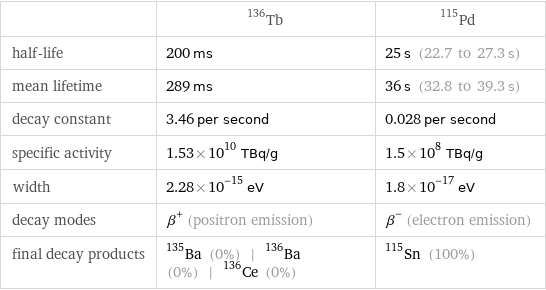
| Tb-136 | Pd-115 half-life | 200 ms | 25 s (22.7 to 27.3 s) mean lifetime | 289 ms | 36 s (32.8 to 39.3 s) decay constant | 3.46 per second | 0.028 per second specific activity | 1.53×10^10 TBq/g | 1.5×10^8 TBq/g width | 2.28×10^-15 eV | 1.8×10^-17 eV decay modes | β^+ (positron emission) | β^- (electron emission) final decay products | Ba-135 (0%) | Ba-136 (0%) | Ce-136 (0%) | Sn-115 (100%)
Decay modes
Tb-136

decay mode | β^+ (positron emission) Q-value | 12.056 MeV (megaelectronvolts) daughter nuclide | Gd-136
Pd-115
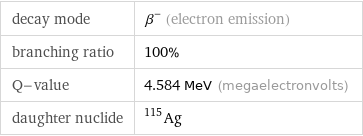
decay mode | β^- (electron emission) branching ratio | 100% Q-value | 4.584 MeV (megaelectronvolts) daughter nuclide | Ag-115
Radiation shielding
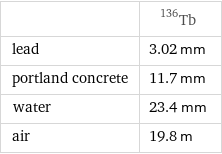
| Tb-136 lead | 3.02 mm portland concrete | 11.7 mm water | 23.4 mm air | 19.8 m
Decay chain
Tb-136

Decay chain Tb-136
Pd-115

Decay chain Pd-115
Mass properties
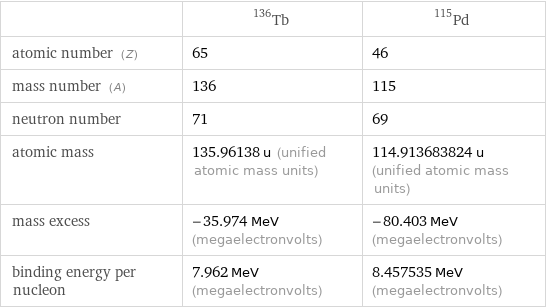
| Tb-136 | Pd-115 atomic number (Z) | 65 | 46 mass number (A) | 136 | 115 neutron number | 71 | 69 atomic mass | 135.96138 u (unified atomic mass units) | 114.913683824 u (unified atomic mass units) mass excess | -35.974 MeV (megaelectronvolts) | -80.403 MeV (megaelectronvolts) binding energy per nucleon | 7.962 MeV (megaelectronvolts) | 8.457535 MeV (megaelectronvolts)
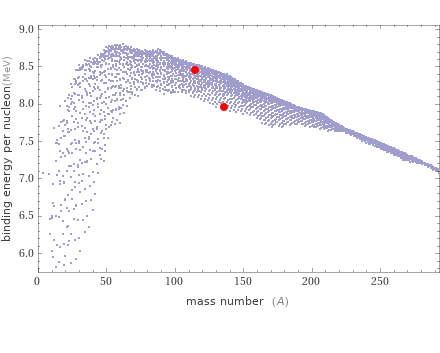
Mass properties
Nearby isotopes
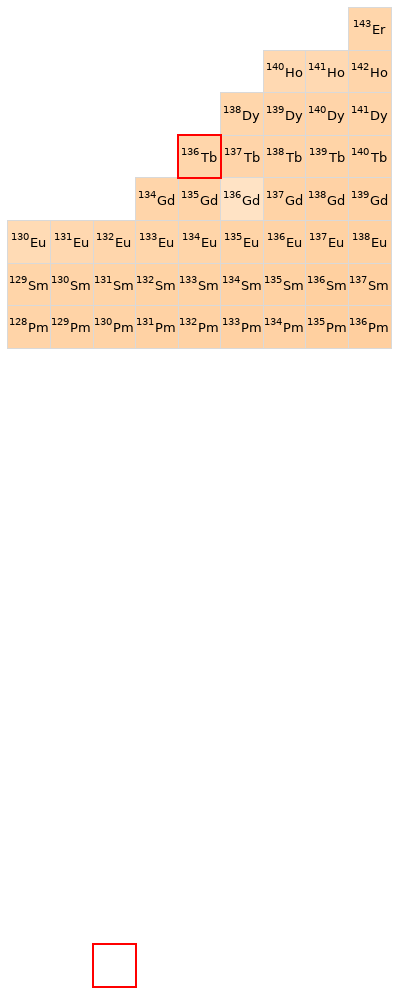
Nearby isotopes
Quantum properties

| Pd-115 spin parity J^π | 5/2^+ (atomic fermion)
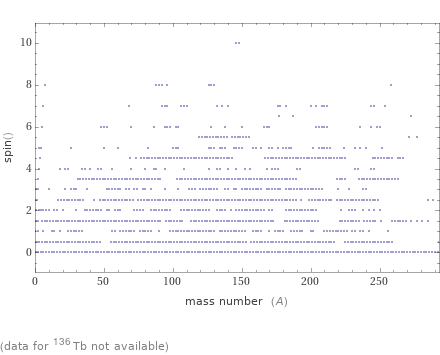
Quantum properties